Basal Ornithopods and Similar Small Ornithischians
|
There are a number of small, bipedal, herbivorous ornithischian dinosaurs that are all superficially similar (and also resemble the heterodontosaurs in general body plan, although not skull), but do not form a monophyletic clade. A number of these are basal members of the Ornithopoda, but some probably fall outside the Ornithopoda (and are closer to the common ancestry of the ornithopods and marginocephalians). Here we group them together for convenience and to reflect their overall similarity.
One such non-ornithopod ornithischian is Nanosaurus agilis, the remains of which had previously been considered to belong to several genera, including Othnielia and Othnielosaurus
Taxonomy: Ornithischia, Neornithischia, Nanosauridae
Morrison Formation, Colorado
Late Jurassic Period, 150 Ma
Museum of Ancient Life, Utah
|
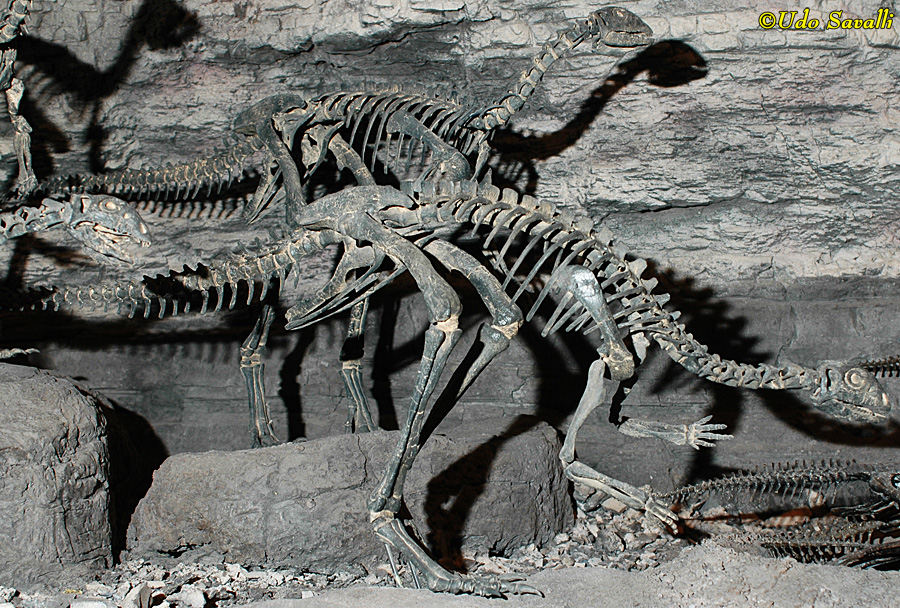
|
|
|
Thescelosaurus neglectus, a relatively large member of this group, reaching up to 4 m long. Different studies disagree if this species is a member of the Ornithopoda or not.
Taxonomy: Ornithischia, Neornithischia, Ornithopoda?, Parksosauridae
Hell Creek Formation, Harding Co., South Dakota
Late Cretaceous Period, 66 Ma
Rocky Mountain Dinosaur Resource Center, CO
|
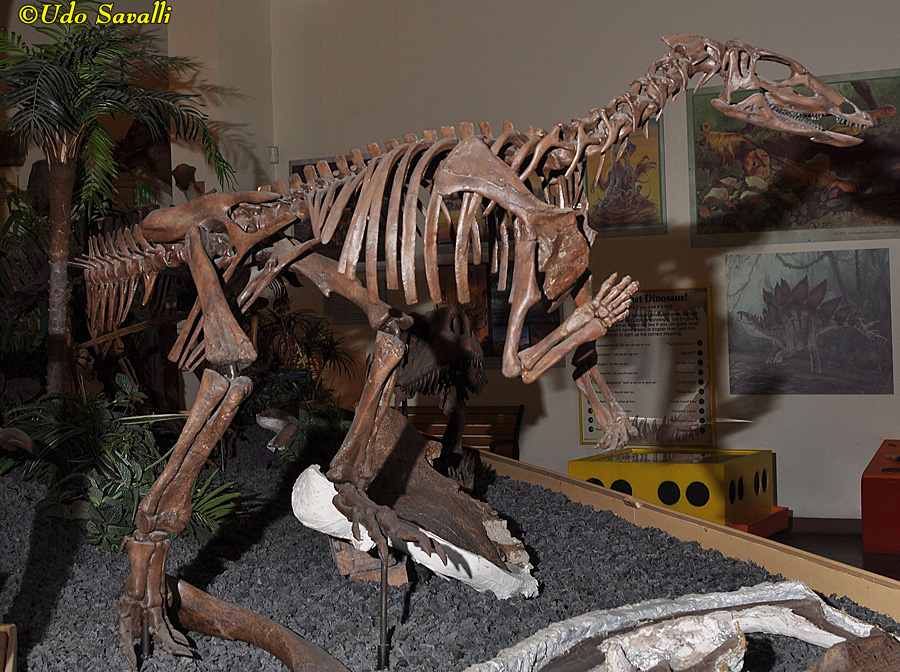
|
|
|
Oryctodromeus cubicularis skeleton cast in body outline.
Taxonomy: Ornithischia, Neornithischia, Ornithopoda?, Parksosauridae
Museum of the Rockies, Montana
|
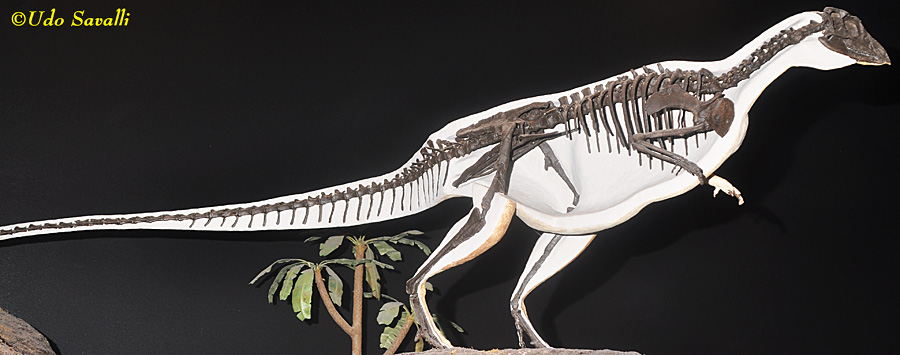
|
|
|
Life model of Oryctodromeus cubicularis.
Taxonomy: Dinosauria; Ornithischia; Ornithpoda?; Parksosauridae
Late Cretaceous Period; Montana
Museum of the Rockies; Montana
|
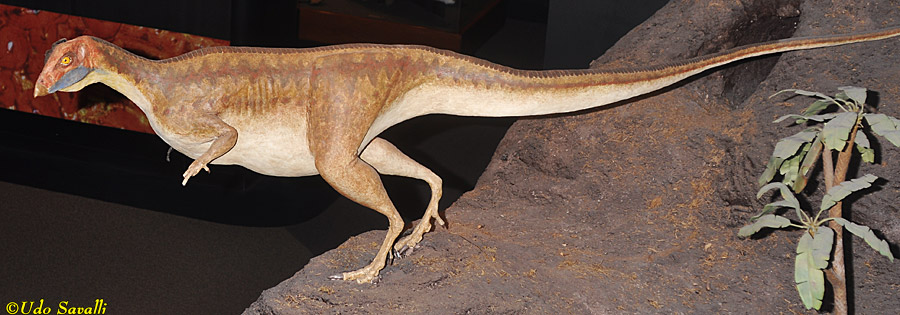
|
|
|
Hypsilophodon foxii most likely belongs in the Ornithopda.
Taxonomy: Ornithischia, Ornithopoda, Hypsilophodontidae
England
Early Cretaceous Period, 126 Ma
Wyoming Dinosaur Center
|

|
|
Iguanodontoid-Grade Ornithopods
|
The Ornithopoda is a clade of small-sized to large herbivorous dinosaurs with a rather generalized body plan and generally lacking the distinctive features that make other groups more recognizable. The smallest species (such as those described above) were obligate bipeds, but larger species became increasingly quadrupedal, though were still facultative bipedal (typically walked on all fours but capable of running just with their hind legs). Medium sized species form a paraphyletic "grade" (similar degree of evolutionary development) between the smaller species and the large, derived hadrosaurs (below).
Camptosaurus dispar is a fairly typical member of the "iguanodontoids". They are larger than the basal ornithopods but smaller than most hadrosaurids. They may have been mostly bipedal when they walked.
Taxonomy: Ornithischia, Ornithopoda, Camptosauridae
Utah
Late Jurassic Period, 150 Ma
Los Angeles Museum of Natural History
|
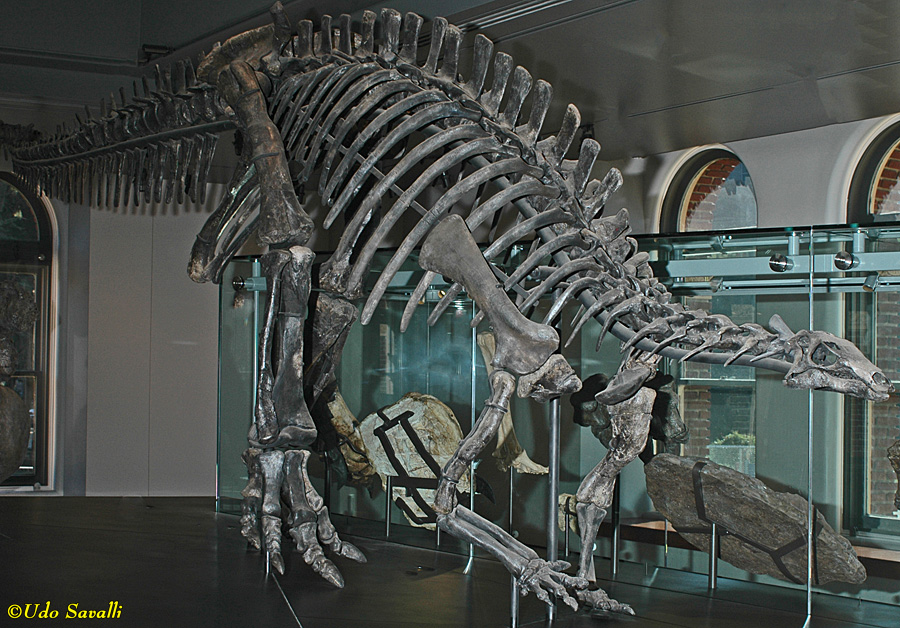
|
|
|
The "inguanodontoid" Tenontosaurus tilletti.
Taxonomy: Ornithischia, Ornithopoda, Tenontosauridae
Carbon Co., Montana
Museum of the Rockies
|
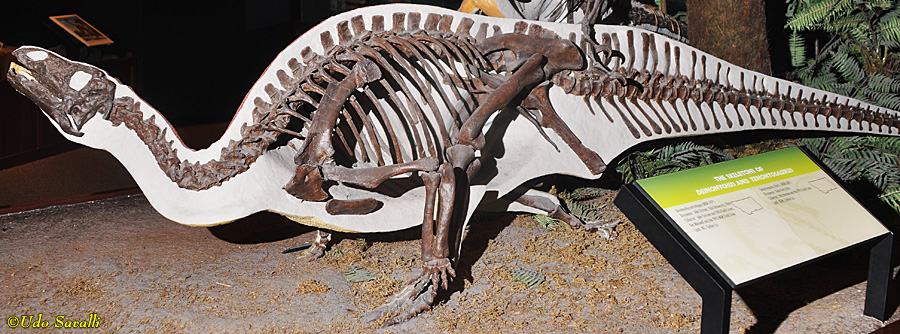
|
|
|
Probactrosaurus gobiensis adult & juvenile is a relatively derived (closer to hadrosaurids) "inguanodontoid".
Taxonomy: Ornithischia, Ornithopoda,
China
early Cretaceous Period, 135-125 Ma
Arizona Museum of Natural History
|
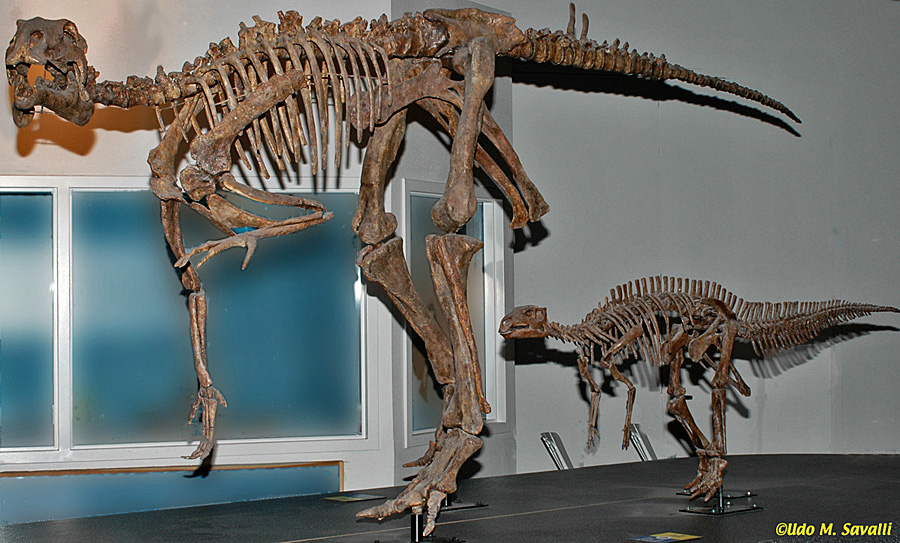
|
|
|
Tethyshadros insularis cast of holotype (specimen used to name species). This species is more closely related to the hadrosaurids (below) than the other iguanodontoids above.
Taxonomy: Ornithischia, Ornithopoda, "Iguanodontoidea"
Liburnian Formation, Trieste Prov., Italy
Late Cretaceous Period, Upper Campanian-Maastrichtian Stages
Black Hills Institute Museum
|
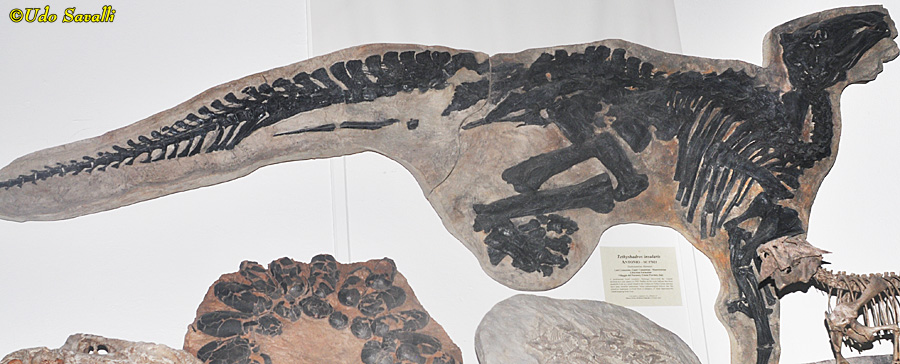
|
|
Hadrosauridae
|
The Hadrosauridae is a monophyletic clade that includes the largest, most derived ornithopods. They typically have a fairly broad beak, and thus have traditionally been referred to as the "duck-billed dinosaurs". They have an advanced, sophisticated chewing ability using batteries of teeth. They are predominantly quadrupedal but may have been able to run on their hind legs.
Edmontosaurus sp. is an extremely well known and fairly typical species of hadrosaurid.
Taxonomy: Ornithischia, Ornithopoda, Hadrosauridae
Western North America
Late Cretaceous Period, 66 Ma
Museum of Ancient Life, Utah
|
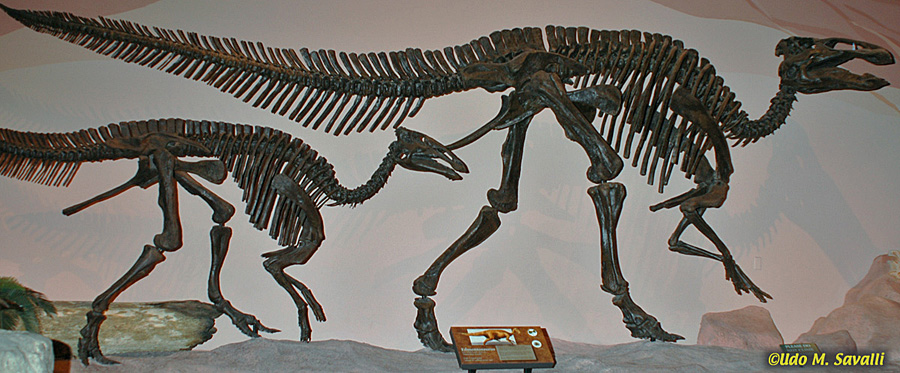
|
|
|
Fossil of a young Edmontosaurus sp.
Taxonomy: Ornithischia, Ornithopoda, Hadrosauridae
Montana
Late Cretaceous Period, 67-66 Ma
Los Angeles Museum of Natural History
|
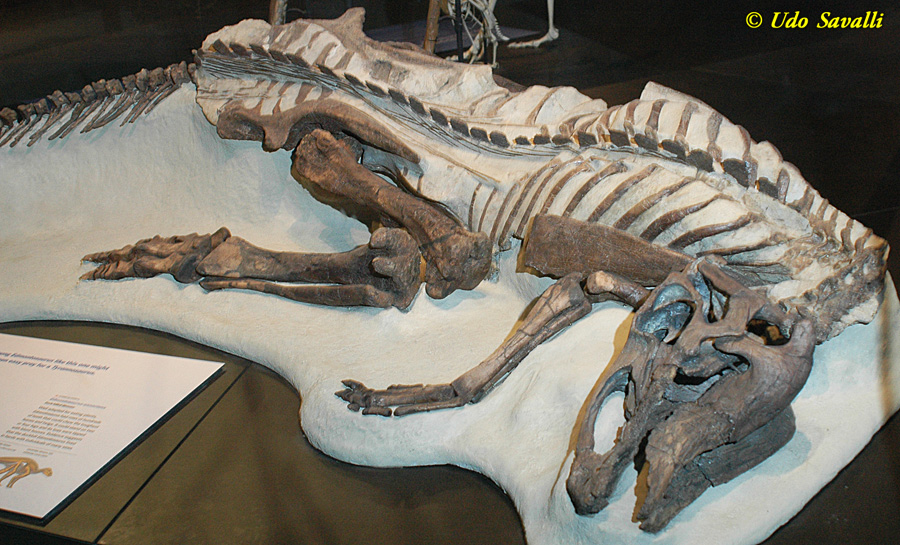
|
|
|
Part of an Edmontosaurus sp. "mummy" fossil showing skin Impressions at the base of the tail; note in particular the presence of a mid-line "frill" made up of raised scales.
Taxonomy: Ornithischia, Ornithopoda, Hadrosauridae
Garfield Co., Montana
Late Cretaceous Period, 68-66 Ma
Museum of the Rockies
|
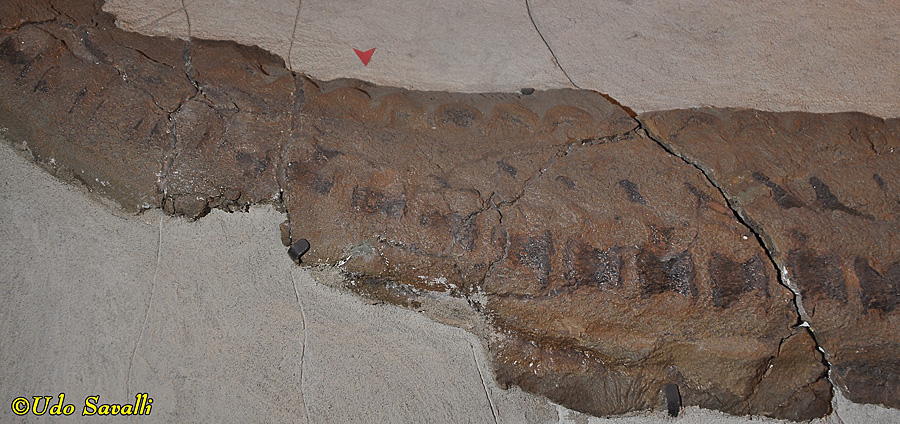
|
|
|
Closeup of skin impression of Edmontosaurus annectens.
Taxonomy: Ornithischia, Ornithopoda, Hadrosauridae
Hell Creek Formation, Bowman Co., ND
Late Cretaceous, Maastrichtian Stage
Black Hills Institute Museum
|
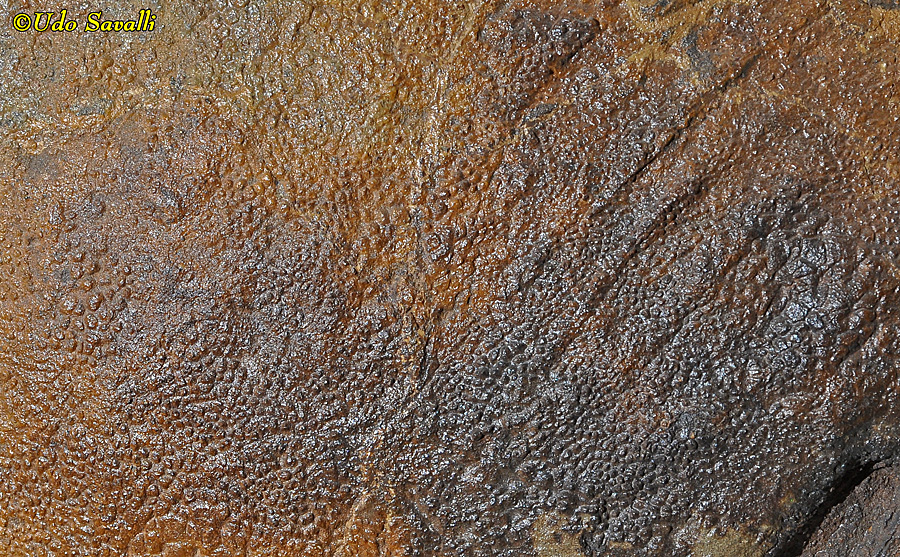
|
|
|
Edmontosaurus sp. jaw showing well-developed dental battery.
Taxonomy: Ornithischia, Ornithopoda, Hadrosauridae
Location
Period
MuseumInfo
|
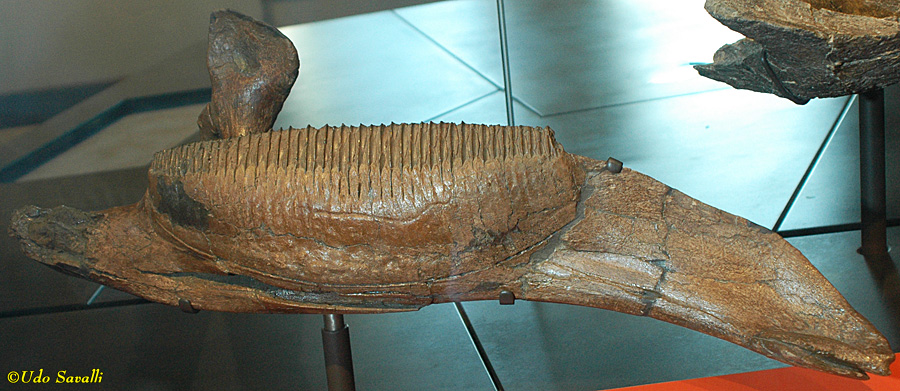
|
|
|
The discovery of nests of Maiasaura peeblesorum with young older than hatchlings provided the first strong evidence of parental care in dinosaurs.
Taxonomy: Ornithischia, Ornithopoda, Hadrosauridae
North America
Late Cretaceous, Campanian Stage, 74 Ma
Wyoming Dinosaur Center
|
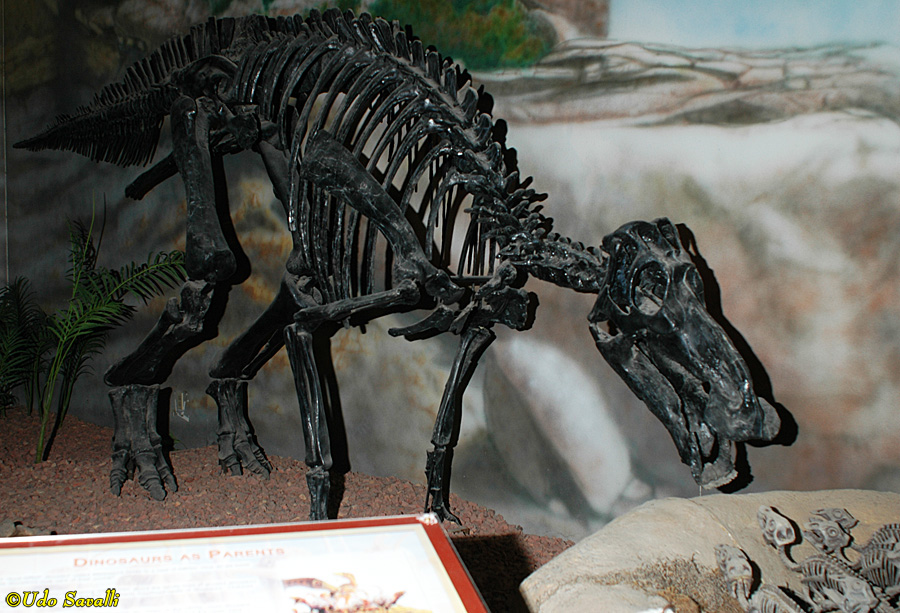
|
|
|
Extensive fossils of Maiasaura peeblesorum individuals of different ages has allowed for the study of how dinosaurs grew, such as these femurs, from hatchling (left) to adult (right).
Taxonomy: Ornithischia, Ornithopoda, Hadrosauridae
Museum of the Rockies
|
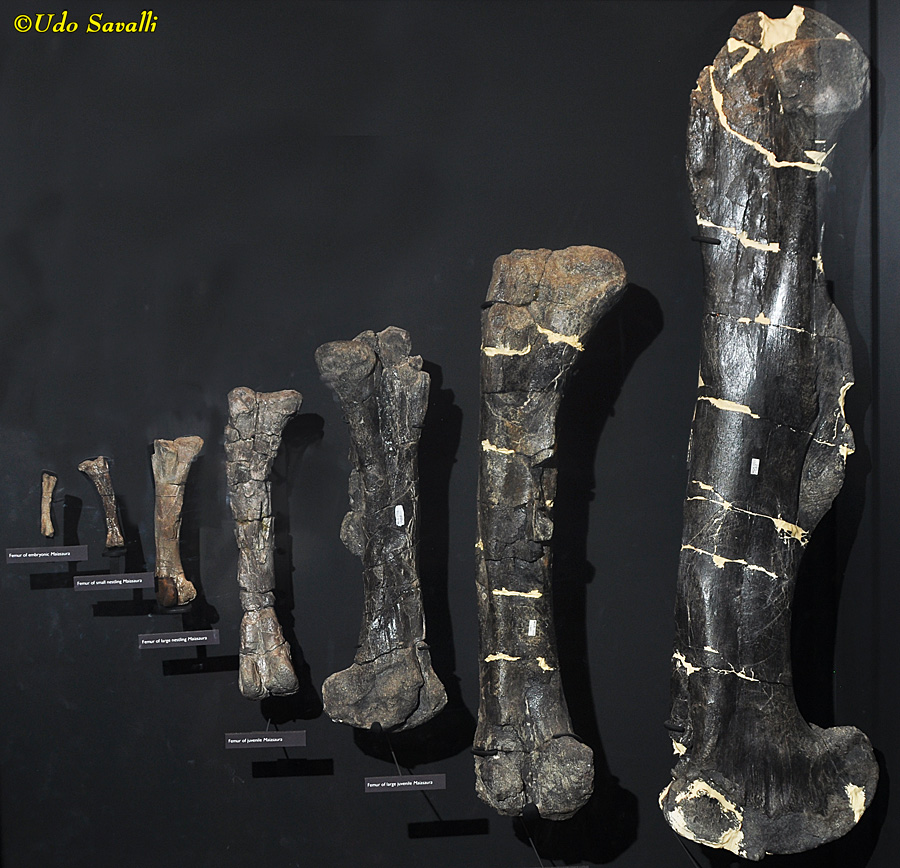
|
|
|
Maiasaura peeblesorum hatchling (left) and nestling (right), showing considerable growth while still in the nest.
Taxonomy: Ornithischia, Ornithopoda, Hadrosauridae
Museum of the Rockies
|

|
|
|
Maiasaura peeblesorum egg clutch.
Teton Co., Montana
Late Cretaceous Period
Museum of the Rockies, Montana
|
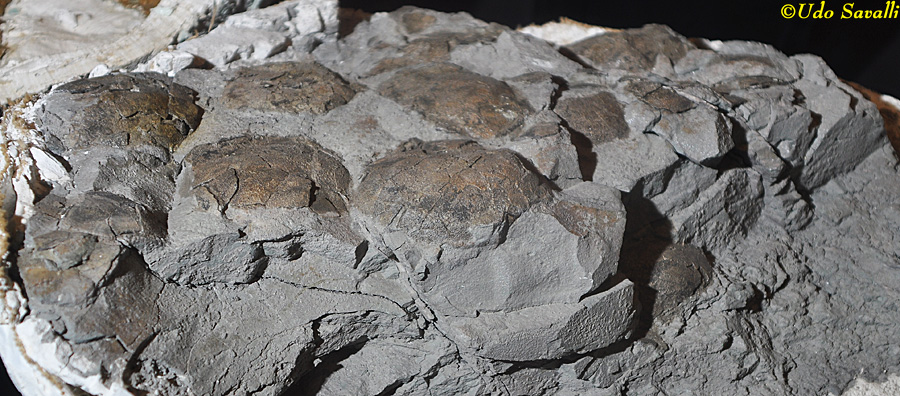
|
|
|
Skeleton of a juvenile Hypacrosaurus stebingeri, another species with extensive growth series fossils.
Taxonomy: Ornithischia, Ornithopoda, Hadrosauridae
Two Medicine Formation, Central Montana
Late Cretaceous Period, 75 Ma
Rocky Mountain Dinosaur Resource Center
|
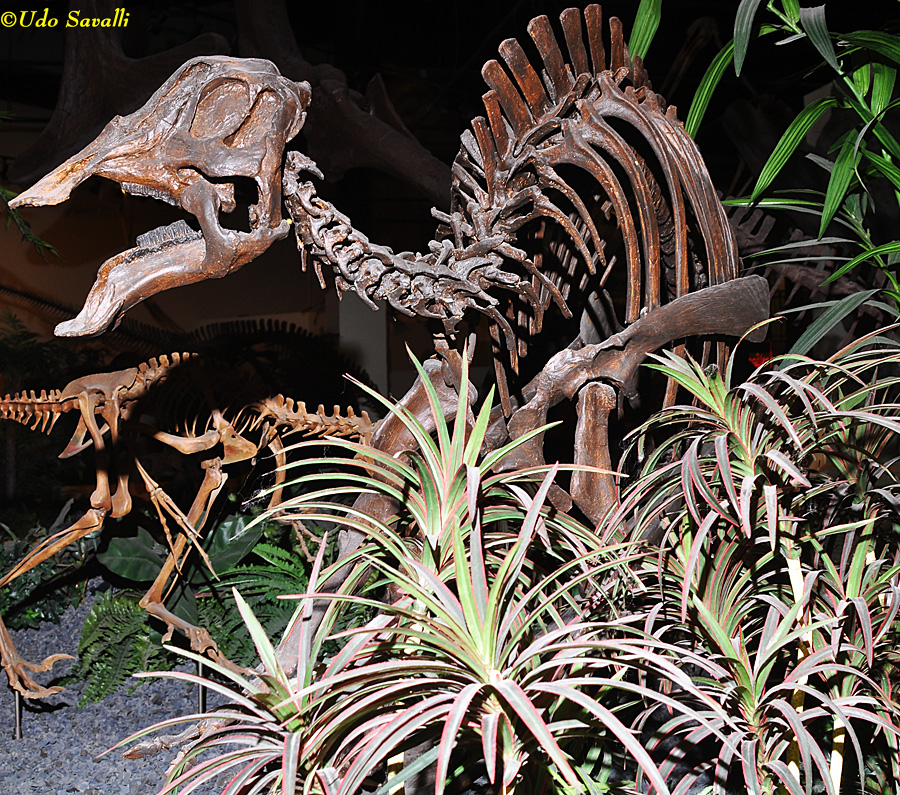
|
|
|
Growth series of Hypacrosaurus stebingeri skulls (not to scale).
Taxonomy: Ornithischia, Ornithopoda, Hadrosauridae
Glacier Co., Montana
Late Cretaceous Period, 75 Ma
Museum of the Rockies
|

|
|
|
Model of an unspecified hadrosaur nest (possibly Maiasaura or Hypacrosaurus?).
Taxonomy: Dinosauria; Ornithischia; Ornithopoda; Hadrosauridae
Fernbank Museum of Natural History, Georgia
|
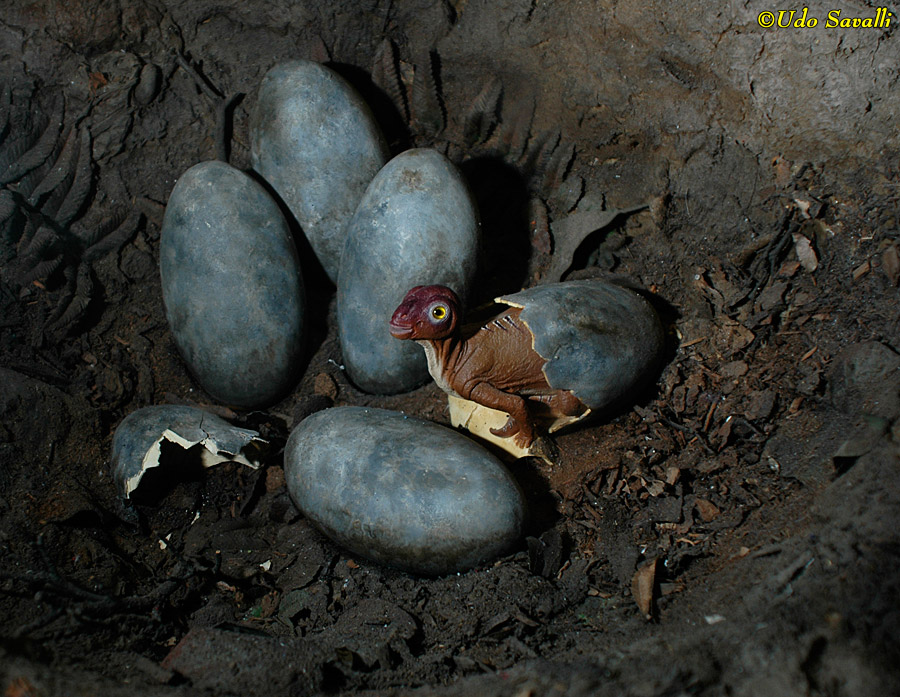
|
|
|
Brachylophosaurus canadensis skull.
Taxonomy: Ornithischia, Ornithopoda, Hadrosauridae
Philips Co., Montana
Museum of the Rockies
|
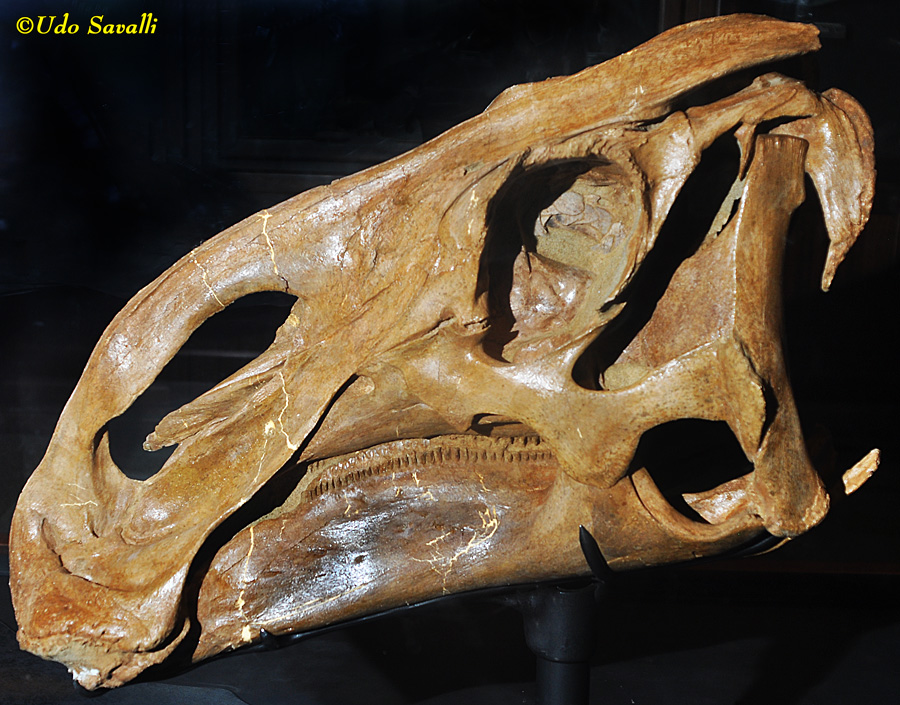
|
|
|
Brachylophosaurus sp. ossified (turned to bone) tendons along vertebral spines help support and stiffen the tail.
Taxonomy: Ornithischia, Ornithopoda, Hadrosauridae
Museum of the Rockies
|
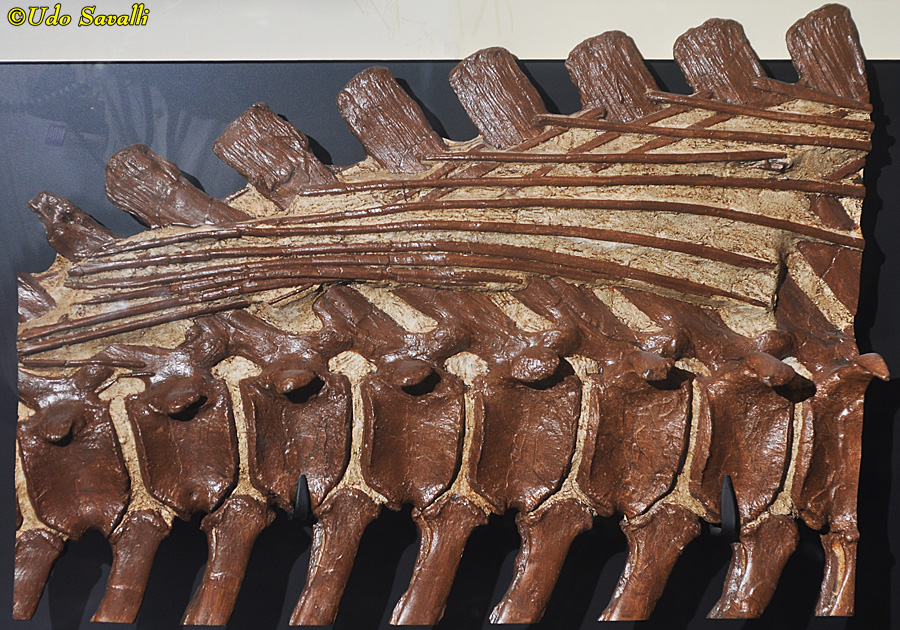
|
|
|
Some hadrosaurids, such as this Lambeosaurus lambei, had hollow crests on their head that probably functioned as a display and to amplify calls.
Taxonomy: Ornithischia, Ornithopoda, Hadrosauridae
Judith River Group, western North America
Late Cretaceous Period, 75 Ma
San Diego Natural History Museum
|
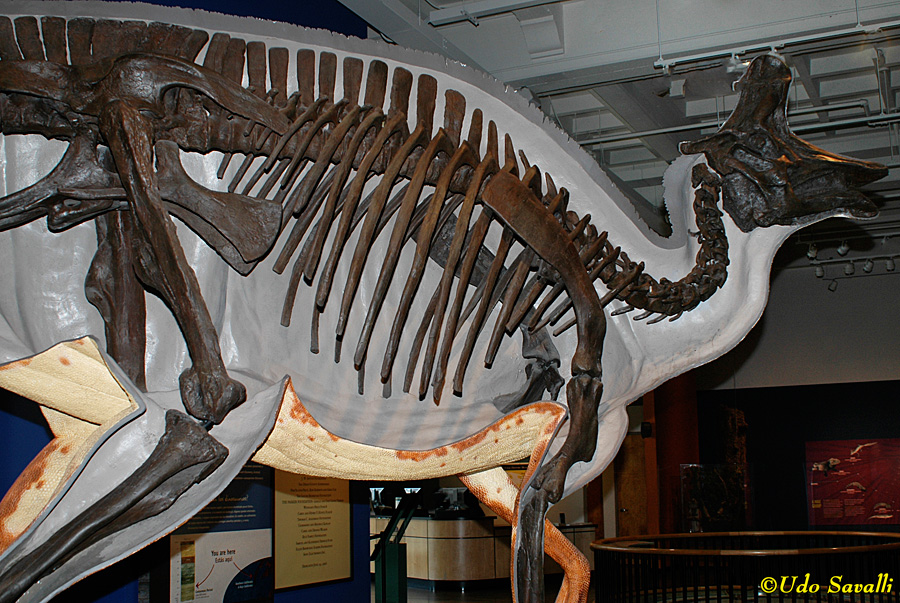
|
|
|
Life model of Lambeosaurus lambei.
Taxonomy: Dinosauria; Ornithischia; Ornithopoda; Hadrosauridae
Late Cretaceous Period, 75 Ma; Western North America
San Diego Natural History Museum
|
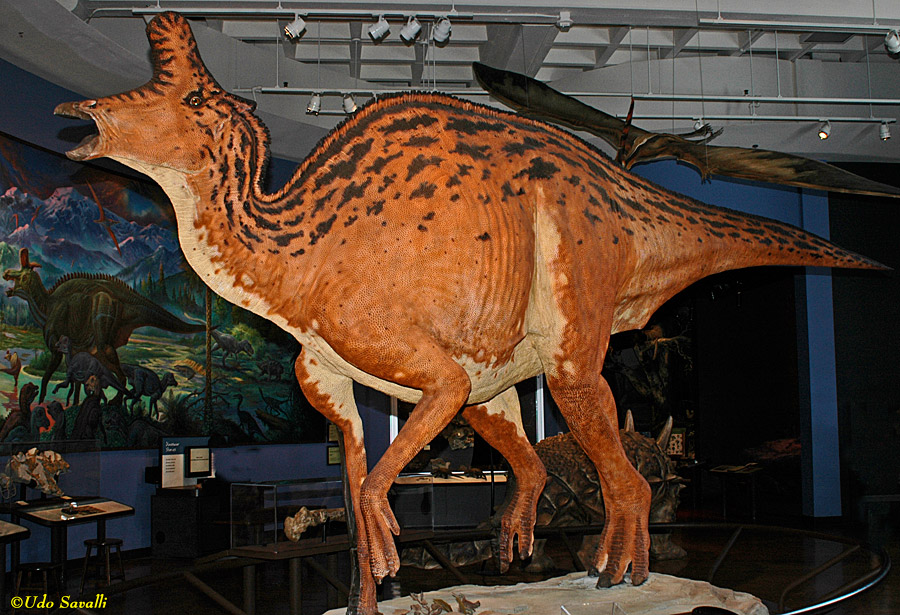
|
|
|
The entire crest of Parasaurolophus walkeri was hollow and connected to the nasal passages.
Taxonomy: Ornithischia, Ornithopoda, Hadrosauridae
Western North America
Late Cretaceous Period, 76-73 Ma
Fernbank Museum of Natural History, Atlanta
|
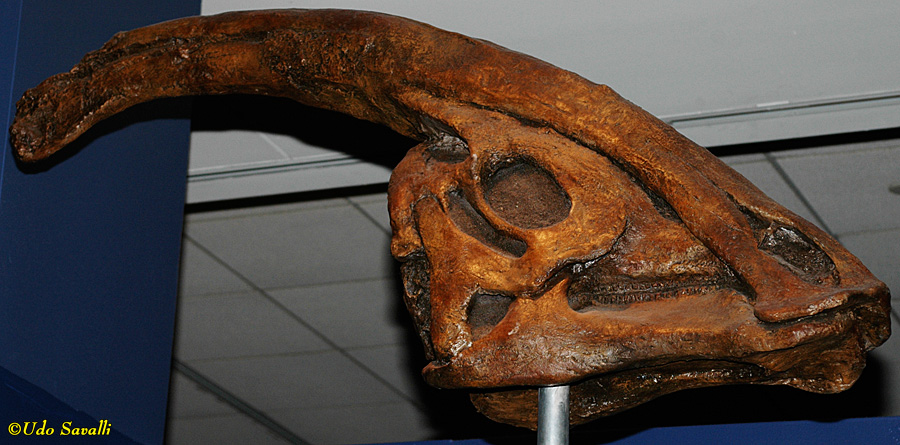
|
|
|
Corythosaurus casuarius.
Taxonomy: Ornithischia, Ornithopoda, Hadrosauridae
Dinosaur Provincial Park, Alberta
Late Cretaceous Period, 76-74 Ma
Los Angeles Museum of Natural History
|
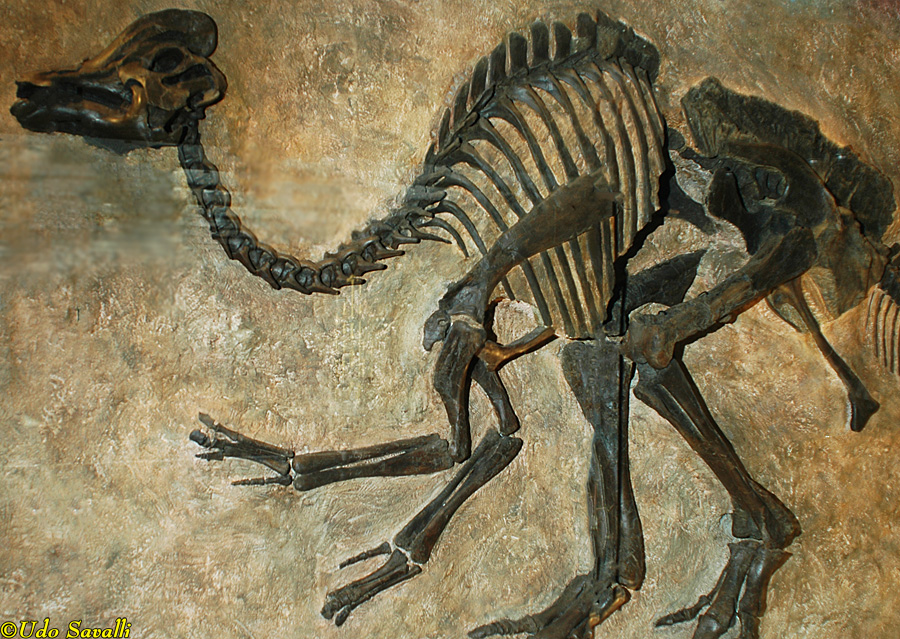
|
|
|
Corythosaurus casuarius skin Impression.
Taxonomy: Ornithischia, Ornithopoda, Hadrosauridae
Alberta Canada
Late Cretaceous Period, 76-74 Ma
MuseumInfo
|
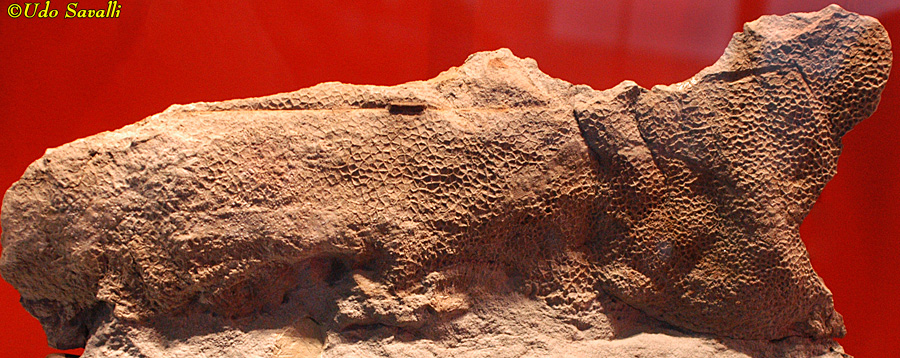
|
|
|
Tsintaosaurus spinorhinus.
Taxonomy: Ornithischia, Ornithopoda, Hadrosauridae
China
Late Cretaceous Period, 69 Ma
Arizona Science Center (temporary exhibit)
|
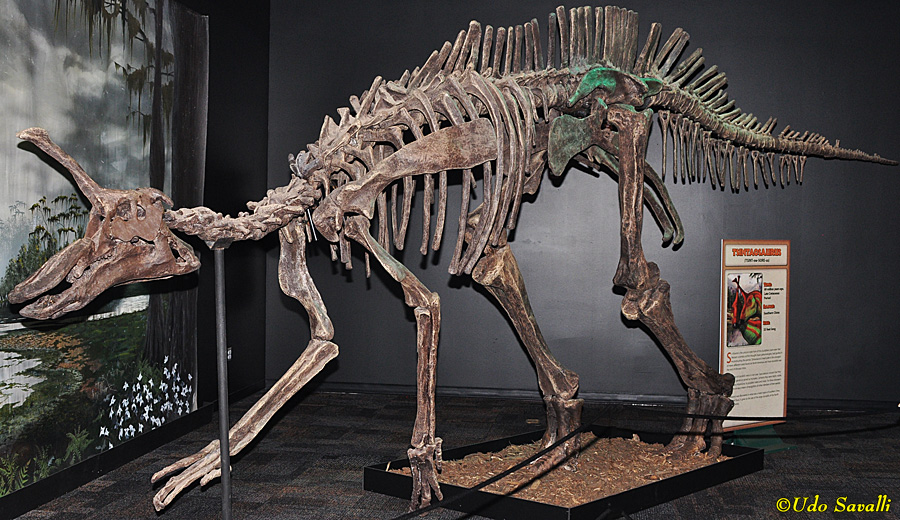
|
|
|
Cast of Saurolophus angustirostris skull.
Taxonomy: Ornithischia, Ornithopoda, Hadrosauridae
Nemegt Formation, Gobi Desert, Nemegt, Mongolia
Late Cretaceous, Late Campanian Stage
Black Hills Institute Museum, South Dakota
|
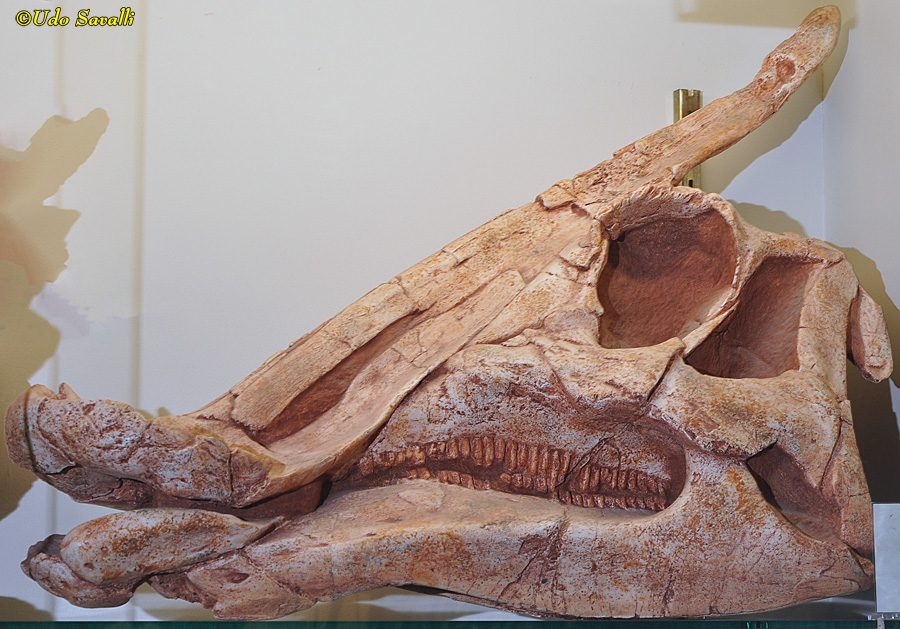
|
|
|
Egg clutch from an unidentified lambeosaurine hadrosaurid.
Hill Co., Montana
Late Cretaceous Period
Museum of the Rockies, Montana
|
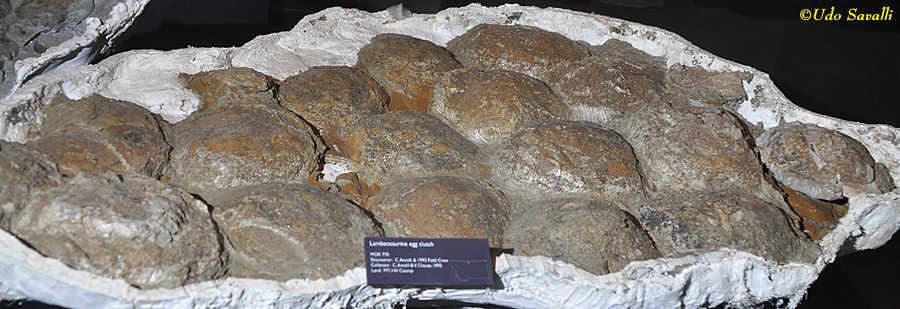
|
|
|






























